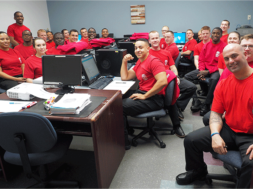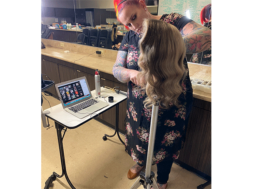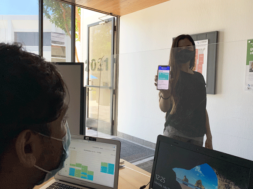
How to Create a Culture of Innovation
By Shane Sparks, Co-Founder & COO, Enrollment Resources
Innovative companies have a natural, lasting and defendable competitive advantage. But there’s a big, intimidating difference between discussing the philosophical merits of innovation and creating an innovative culture at your school. So where do you start if you want to implement innovation in practical terms?
Creativity
Innovation stems from creativity. We’re not talking about the artsy, whimsical notions conjured up at the very mention of “creativity.” Instead, the creativity necessary for innovation is simply the ability to make connections between things where there is no obvious connection.
Analytical and scientifically-minded people can be immensely creative. Innovation thrives on iterative exploration and inquiry. Think of all the scientific minds who, while testing one hypothesis, stumbled upon potentially life-altering discoveries. Without creativity, scientists would dismiss every unexpected outcome as a failure instead of the possible breakthroughs they could become!
Innovation is an outcome of open-mindedness, and willingness to dig deep.
Disruption
This may sound counterintuitive, but smooth sailing can make a company comfortable and complacent, and cause it to lose its competitive advantage and eventually die.
Creative disruption of some sort is a crucial pre-step for innovation. The status quo has to be interrupted. Things have to be a little uncomfortable to foster growth.
Change, even incremental change, requires disruption, but that doesn’t mean you have to brace for chaos. A competitive business needs structure to avoid descending into chaos. It also requires an atmosphere that’s friendly towards innovation. A business without any process at all is equally as doomed as one that’s terrified of change.
There’s no need to throw the entire market into upheaval to get results. Start by examining your business processes, generally accepted best practices and assumptions about your customer with fresh eyes.
Refinement
Say you’re looking to improve show rates to appointments. You gather a bunch of staff for some “innovative” brainstorming, and your efforts yield a list of things: appointments within 24 hours, text reminders, testimonials, etc.
While all excellent ideas, these are process refinements. They’re linear changes that wouldn’t make any fundamental changes to your current model.
To think innovatively, ask yourselves a different question. Perhaps, “Why don’t people show to appointments?”
- They don’t have a car.
- They forget.
- They purposely “forget” because they don’t want to say no.
An innovative idea would be to pick them up (just like National Car Rental)! Or you could remove the problem altogether and send your admissions team to the prospect instead!
These ideas are nonlinear, fundamental changes to your current model.
Outside your bubble
You don’t need to be particularly creative to be innovative. Businesses outside your sector are bursting with ideas you can borrow.
Seek out approaches to problems or inefficiencies that are similar (but not directly related) to your processes. You may ask:
- What other sectors do an excellent job of getting people to show up for appointments?
- How does my dentist/hairdresser/mechanic do it?
- What are they doing that we could do?
For example, senior living has virtually the same business model as education. Their savvy marketers have made smart moves, and it is a great place to start your search for ideas that don’t need a lot of massaging.
Ideas are everywhere:
- Giants like Disney have crafted world-class experiences for their guests. Mine their processes for lessons you can apply to yours.
- Amazon has spent a ton of money testing traffic conversion ideas. Can you repackage Amazon’s best ideas for an education offering?
- Low-tech or pre-tech approaches still have something to teach us. Sure, as technology evolves so do the tactics, but the psychological principles that drive buying decisions are the same as they’ve always been. At Enrollment Resources, we borrow generously from mail order best practices that date as far back as the ‘70s. Scientific Advertising, one of my favorite advertising books, dates back to the 1920s and is still a constant source of inspiration.
The top companies in any industry, the ones on the “best of” lists with healthy growth and happy employees, are innovators and disruptors. They succeed and thrive because they always have at least one foot out of the comfort zone and failing is a best practice.
Safe to fail
Competitive cultures fixate on results rather than methodology. This results-focus culture encourages short-term wins and sabotages long-term innovation.
Competitive cultures, by their very nature, punish people for ideas without immediate positive returns. If your idea “loses” then you are a “loser.” Losers risk consequences ranging from losing face to tanking a career. In record time, no one takes chances, shows initiative or says anything original and exciting.
Innovative companies focus on process instead of the outcome. Even if you fail 10-20 times, an idea will eventually grab and become something powerful and permanent.
It’s now your intellectual property and an asset that would not have existed in a culture that punishes failure. You win some and lose some, but declaring “winners” and “losers” based on the outcome just doesn’t work. It’s all about the process.
For example, at Enrollment Resources, I’m responsible for testing and innovation. I don’t care much if ideas succeed or fail; I’m interested in its execution and the reasons behind it. I need to know:
- What was the problem that needed to be solved?
- What was the hypothesis?
- How was it tested?
By using the scientific process as our model, we separate the person from the outcome and gather useful information from both successes and failures.
We call it “fail fast, fail often.” Our truth-seeking-culture makes it safe for staff to have and share ideas. The ability for them to take risks without putting their career on the line creates energy and enthusiasm, and, honestly, generates way better ideas than our competitors.
Our “failing fast” model ultimately leads to more successes in the long run.
Do it yourself
Here are some steps you can follow to sow the seeds of a culture of innovation at your school today:
1. Get clear buy-in from management. Buy-in is incredibly important; all your efforts will be for nothing if they kill your ideas early.
2. Put together an “Innovation Council.” This group should have multiple team members from different departments with varying seniority and experience in the sector.
3. Give your Innovation Council a clear and open mandate. Ask them to answer questions like: “How do we…” or “Why don’t people…”
4. Give the council enough time to think the idea through. Some people will actively research the question while others will benefit from space to let it percolate.
5. Use the “5 Whys” exercise to get to the root of it all. Through this technique, members of the council will learn to drill to the core cause of the problem both individually and as a group.
6. Set up safety nets. Once you have established a hypothesis, set up safety nets, testing, and measurement protocols. This step answers the question “how do we know if it works?”
Safety nets, like pilot projects and split testing, empower your employees to test innovative ideas without risking everything. As a manager or director, overseeing 4-5 split tests across departments is a good place to start.
For example, automated voicemails are an excellent opportunity to test your messaging in your Admissions Department. Treat them like 15-20 second radio ads. Based on your current best practices, write a script aligned with where the prospect is in their buying decision. Record it in the morning when your energy is at its peak and measure the response. Next, write a variation of the script and test it the same way. By continuously improving your message and delivery, you could easily see a 5 percent improvement on meaningful conversations in a given month. For some schools, that 5 percent would equal 45 more meaningful calls, and 6-7 new students signing-up who wouldn’t have otherwise.
You can split test and measure the effectiveness of your email subject lines, landing page elements (such as calls-to-action, pictures, headlines, colors, etc.) and more using the same basic testing structure.
7. Know your constraints. Ask the council what constraints might prevent an idea from turning into a result. This knowledge will assist in measurement, the refinement of testing techniques, and your final report to management.
8. Test, measure, record and repeat.
9. Create a separate group that looks outside your sector. This group should also be made up of employees from different areas of your school. Establish a process for this group to share their findings and ideas with the Innovation Council.
10. Record your thoughts and takeaways. The metrics used by your school’s top decision makers to judge an idea’s worth probably won’t apply here. Even at the beginning, management cannot judge a culture of innovation through immediate, short-term wins.
A combination of the caliber of ideas your teams generate, the positive incremental gains from testing, employee enthusiasm, and your observations will demonstrate the need to change.
Ready to get started?
A willingness to be challenged on long-held assumptions and beliefs, an open-mind and the go-ahead from management are all you need to start creating a culture of innovation at your school. Make small, practical and strategic changes to established processes and build your own lasting and defendable competitive advantage.
SHANE SPARKS specializes in measurable marketing programs, leading our fulfillment team to create measurable, effective campaigns. He is also co-creator of ER’s proprietary Enrollment Management Scorecard Process (EMScorecard™) – a benchmarking business process that helps schools identify money lost in their marketing and admissions departments (usually hundreds of thousands of dollars) AND provides an actionable, realistic plan to recapture the lost revenue. Shane is a former award-winning creative director who lost faith in the impractical and widespread waste of the advertising industry.
Contact Information: Shane Sparks // Co-founder & COO // Enrollment Resources // 250-391-9494 // info@enrollmentresources.com // www.enrollmentresources.com // LinkedIn: www.linkedin.com/in/shanemsparks











